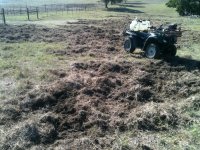Releasing rabbit-borne diseases has proven somewhat successful in controlling the population of rabbits in Australia. In 1950, after research carried out by Frank Fenner, myxoma virus was deliberately released into the rabbit population, causing it to drop from an estimated 600 million[11] to around 100 million. Genetic resistance in the remaining rabbits allowed the population to recover to 200-300 million by 1991.
To combat this trend, Commonwealth Scientific and Industrial Research Organisation (CSIRO) comprehensively tested, over three years from June 1991, the release of calicivirus to cause rabbit haemorrhagic disease (RHD).
[12] The virus escaped from a quarantine compound on Wardang Island, South Australia, where field tests were being carried out on the potential of the virus for biological control of wild rabbits, and by late October 1995 it was recorded in rabbits at Yunta and Gum Creek, in northeastern South Australia.
[13] By the winter of 1996, the virus was established in Victoria, New South Wales, the Northern Territory and Western Australia. The success of the virus was found to be higher in extreme heat, because it appears there is another calicivirus in the colder, wetter areas of Australia, and that this virus was immunising rabbits against the more virulent form.
A legal vaccine exists in Australia for RHD. There is no cure for either myxomatosis or RHD, and many affected pets are euthanised. In Europe, where rabbits are farmed on a large scale, they are protected against myxomatosis and calicivirus with a genetically modified virus.[14] The vaccine was developed in Spain.






 This is one nights damage and that used to be a road/trail.
This is one nights damage and that used to be a road/trail.



